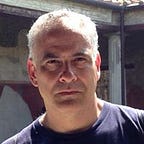The Emerging Ought
Skills and Tools Leaders Need to Engage a Purpose-Oriented Economy
Today companies and their leaders are expected not only to generate shareholder returns, but to do so in a way that creates positive social and environmental effects. This has been forced by increasing global transparency of corporate actions as well as by rising public concern for capital’s adverse impacts on workers, communities and ecosystems.
While born of necessity, this increasing focus on ethical and moral intent is also a massive opportunity for the firms that choose to embrace it fully. Put in cold economic terms, there is skyrocketing demand for positive externalities. Those who satisfy this demand will thrive. Those who don’t will fade into irrelevance or commoditization.
And it has begun already. The most successful CEOs of the present moment, Jeff Bezos and Elon Musk, have long excelled at painting the long-range social arc for their businesses. Even as opinions may differ about the moral value of the worlds these two envision, there is no doubt that they are animated by far more than “Shareholder Value Creation.”
New skills and tools to apply
To pursue this is to change focus from a conventional business mindset of “what is and has been” and “what might be” to a new mindset of “what ought to be?” But the shift involves more than mindset. It requires tools and skills that have not typically been part of strategy formation or execution. Here are just three of these.
Vision Narratives
CEOs will no longer be held accountable for quarterly results. They will be expected to articulate long-range vision for what the “ought” should be. Both inside and outside the organization, they will need to become the lead storytellers for this vision. No longer a talking head with talking points, an authentic vision-leader has to believe in and inhabit the vision with the intensity of a founder. The vision narrative is not only a set of words. It is a series of dramatized actions that are woven together so that those following the narrative can see it unfold over time. Think of how differently Kindle entered the world of e-readers and Alexa entered the world of home hubs. They were not just new products, but rather embodiments of the service-oriented vision at the heart of Amazon.
Outreach Experiences
The “ought to be” cannot be born inside the firm, because it is by definition about the interests of the world outside the firm and its traditional customers, suppliers and investors. So, firms seeking to establish what ought to be will have to engage stakeholders they have typically not engaged constructively: communities, governments, non-governmental leaders and others. And that engagement will no longer be about “checking the box,” but has to result in lasting relationships and true breakthroughs in how we define resources, costs and benefits. Businesses can catalyze and unite communities around shared purpose only if the purpose is genuinely shared.
Foresight Space
To engage in a dialogue about the “ought to be” requires extreme flexibility and discipline in how we think about the future. We need ways to quite literally and vividly step into possible futures to understand how they might work and how they might become compelling to all stakeholders. We can use tools and methods borrowed from Design and Social Sciences to reveal the most important “hills to take” as we create the future. These are where to direct product, service, process and business model innovation. The word “space” here is not used as a metaphor. The most successful approaches to foresight have long used literal spaces — immersive physical and virtual environments in which potential options can be experienced and in which conversations can be given room to breathe and evolve. In these spaces, the company can convene all stakeholders.
If any of these ideas seem useful to you, let me know. I’d love to talk about how we could apply them to your situation.
